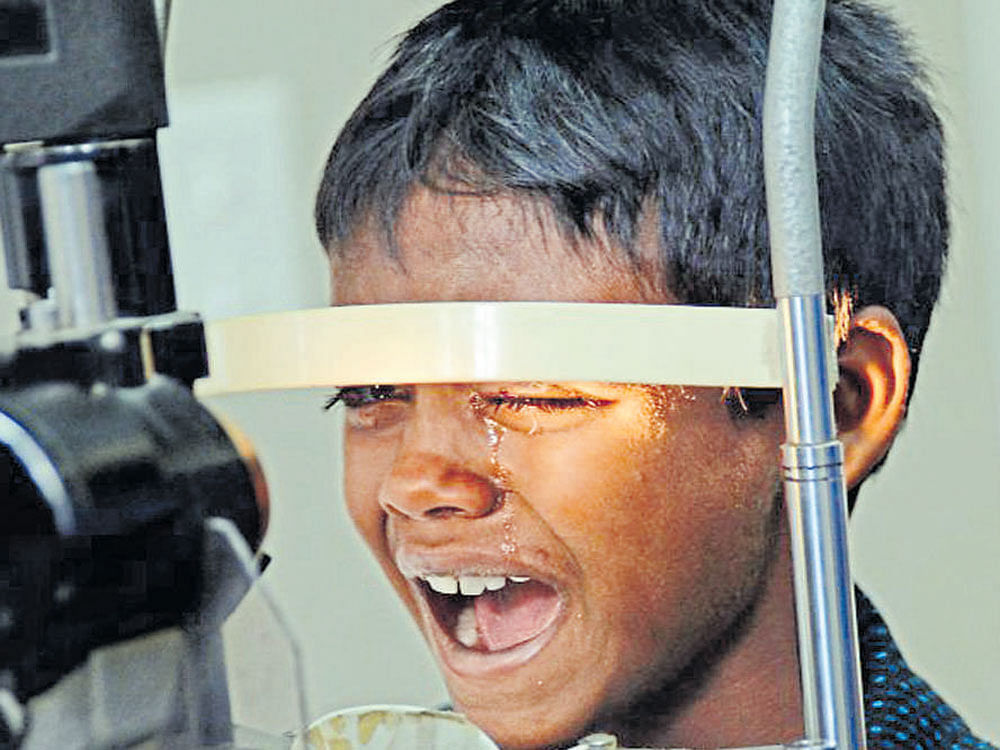India is one of the world’s youngest countries with a median age of less than 29. That translates into well over 350 million young Indians between the ages of 10-24. This is a motivated generation, aspiring for an exciting and fulfilling life ahead. But it is also faced with a growing health problem that it is scarcely aware of.
Myopia, commonly referred to as short-sightedness is a visual dysfunction that limits the ability to see distant objects clearly or without the aid of glasses. Myopia usually sets in early, affecting school-going children.
In 2010, just over 28% of the world’s population had myopia. This is predicted to rise to 34% by 2020 and nearly 50% by 2050. In some Asian countries, 70% of those aged 17 or above are myopic.
A study done in Delhi by AIIMS revealed that 1 of 6 or 17% of children between the ages of 5 and 15 is myopic. According to UN data, countries where myopia prevalence was estimated and measured as low in the past, such as India, will have major increases by 2050.
What’s worrying is that myopia is being diagnosed earlier in school-going children and is rising in severity. In fact, a child with one short-sighted parent has three times the risk of developing myopia, or six times the risk if both parents are myopic. Additionally, more children and teens with no previous family history of myopia are now being diagnosed with the condition. Many of these children also tend to become introverted as they grow up.
What is driving this? For one, children are now spending more time indoors, hooked to phones, computers and tablets. Outdoor activities have reduced considerably as a result. A greater focus on studies and extra-curriculars further reduces outdoor time.
Factors such as these are depriving children’s eyes of critical visual stimulation and development, that is achieved only when looking at distant objects when outdoors, and even resulting in a ‘myopic eye’.
Studies show that increased outdoor time can be protective against myopia onset. Clinical trials from Taiwan and China indicate that 40 to 80 minutes of additional outdoor time during the day in primary school children reduced myopia incidence by 23% to 50%.
Clearly, the long-term preventive option is to have children spend more time outdoors. But in today’s agenda-driven lifestyle, that may be easier said than done.
Another option is to wear glasses. While glasses work for most people, for extreme cases and complications, a more long-term and preventive ‘surgical’ solution is required.
For ‘super normal’ vision
One of the better options is to undergo a laser vision correction procedure, commonly known as LASIK. Laser vision correction has been around since the 90s, but in recent years it has evolved to a highly sophisticated, automated and technology-driven procedure that provides not just normal but even ‘super normal’ vision.
Modern LASIK is a bladeless and painless procedure that requires no more than a few seconds to complete its work on the eye/s. Its safety and efficacy is so well-established that institutions such as the Indian Air Force and even Nasa find it good enough for their pilots and astronauts.
Technology is now bringing even further advances — this one is called a ‘customised LASIK procedure’. Each eye has an optical fingerprint that is unique, with its own minute or subtle imperfections. Diagnostic devices map these imperfections, convert it into data to be utilised by the laser’s computer to form the treatment profile (which maps out the distribution of laser pulses).
All of this is done without entering the eye. Further, not only does the quantity of vision improve, to a ‘6/6’, but so does the quality: subjects report faster reading speeds, more comfort in night driving and less eye strain when using laptops. Some subjects can see distant or small objects with the clarity that they couldn’t before even with glasses, and the effect lasts a lifetime!
While all this is very well for young adults (18-35), children affected by myopia need to wait before undergoing surgery. It’s important to remember that any treatment should only be in consultation with a qualified medical practitioner. Regular eye check-ups, often overlooked, should also be encouraged to identify emerging problems before they magnify in intensity.
For India’s youth affected by myopia, the more important lesson to remember is that “prevention is better than cure.”
(The writer is Senior Manager — Applications, LenSx, Alcon India)
